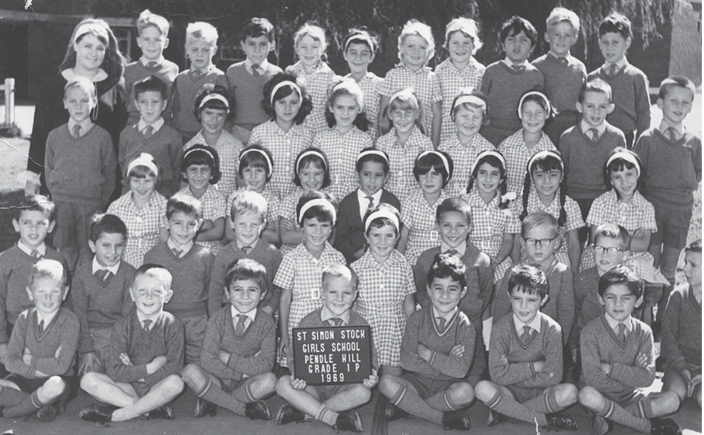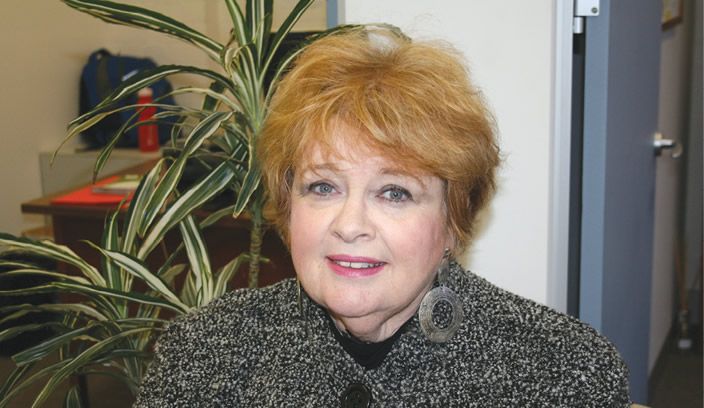Schools were run by religious orders and the ‘lay teachers’ were often untrained or were completing their teaching qualifications at night.
In 1966 the Catholic Teachers College at North Sydney offered a one year teacher training course which became two years in 1968. The transition year between one and two year trained teachers was 1967.
I was appointed to St Simon Stock Girls School Pendle Hill, run by an order of Maltese Dominican nuns. It was later to become Our Lady Queen of Peace Primary at Greystanes.
During 1967, aged 19, I taught Year 2 from July to December with 67 students and received $15 per week. Most teachers were paid by the parish and received about one-third of the salary paid to state school teachers.
The school was only one stream and there were 84 children in Kindergarten. It was a church school which meant that every Friday everything had to be removed, so that the classrooms would be ready for Mass.
I was fortunate enough to be given a room in St Simon Stock Boys School, now St Paul’s Greystanes. Known as “the dungeon” it was used as a storeroom and was in very poor condition. There was a lot of rubbish, broken tables and chairs and little else.
Fortunately, my father was a church and school builder and my aunt was a Josephite. The tables and chairs were repaired, and Mum and I painted the room. Dad grabbed useful bits and pieces that schools were throwing out. My aunt gave me a blackboard, two statues and most importantly, two large boxes of chalk, one white and one coloured and so began my teaching career.
On my first day the principal gave me my teaching resources, a stick of white chalk and a feather duster. I was told to return the small bit of used chalk and I would be given another.
Luckily, I had boxes of chalk and the promise of more when needed.
As enrolments in Catholic schools grew, more lay teachers were employed and dissatisfaction with salaries and conditions also grew. In the late 60’s teachers established the Catholic Institute of Teachers (CIT) and in 1968 the Sydney Catholic Education Office began the administration of schools.
Emergence of a union
There was an existing teachers union and teachers in Catholic schools began to join the Assistant Masters and Mistresses Association (AMMA) and that influx of new members brought about significant changes.
In 1969 the AMMA applied for an award for teachers in non government schools to achieve wage parity with state school teachers. This happened over the next four years and saw our wages double, and in some cases triple.
Qualifications became important so many teachers were upgrading at night from two to three to four to five year trained. In 1971 we were involved in the first industrial dispute over cleaning of classrooms and from then on cleaners were employed and we were not required to sweep our classrooms after school each day.
In 1972 the AMMA became the Independent Teachers Association (ITA).
Our Lady Queen of Peace was expanding rapidly as poultry farms gave way to housing estates and by 1972 a new school had been built. There were four streams, and at one time it was the largest Catholic primary school in New South Wales.
In 1977, I represented the ITA in a case against the Catholic Education Office for renumeration for teachers in unpaid promotional positions. It was a harrowing day in the Industrial Commission but we won.
A fight for rights and wages
After 22 wonderful years I decided it was time to move on when one of my Year 3 students informed me that I had taught his father. Those years had brought about amazing changes in wages and conditions as a result of committed union members prepared to act in solidarity and fight for their rights, wages and conditions.
In 1989, I was fortunate to work with the ‘New Arrival’ program, visiting schools working with migrant and refugee students. In 1994 I began working in Curriculum, ESL and New Arrivals at the Catholic Education Office Parramatta.
Working with disadvantaged schools and assisting a large number of refugees from Southern Sudan were some of the highlights, as well as working with inspirational people who had a strong sense of social justice.
As I reflect on what the IEU has achieved it is almost impossible to imagine that the first meeting of Catholic teachers with a few hundred members would lead to the IEU of 2020 with 32,000 members and wages and conditions that could only be dreamt of in the 60s.




































































































































